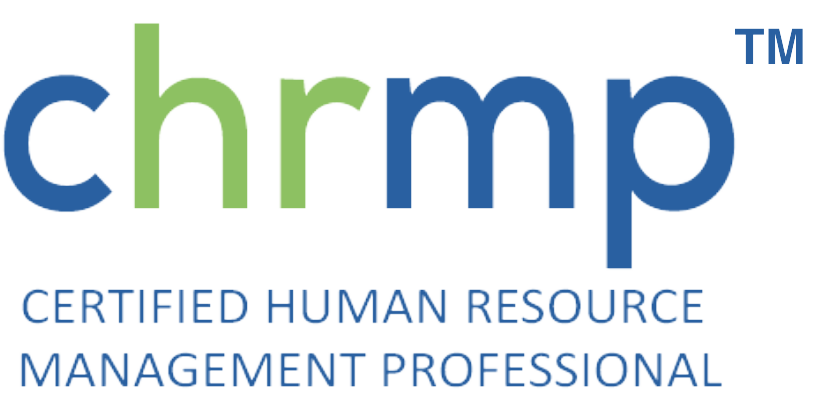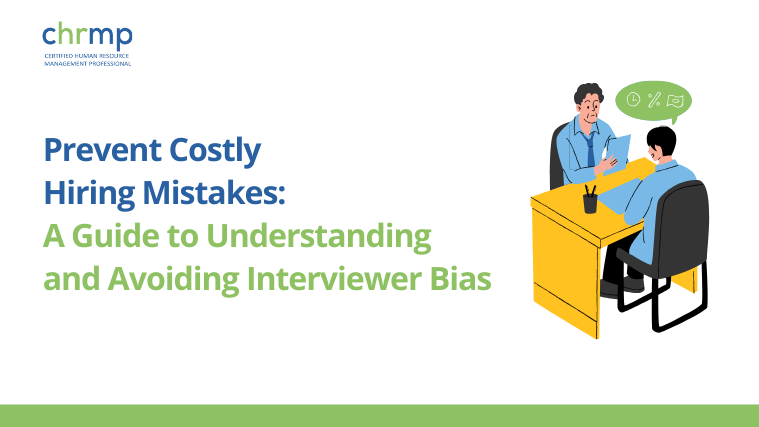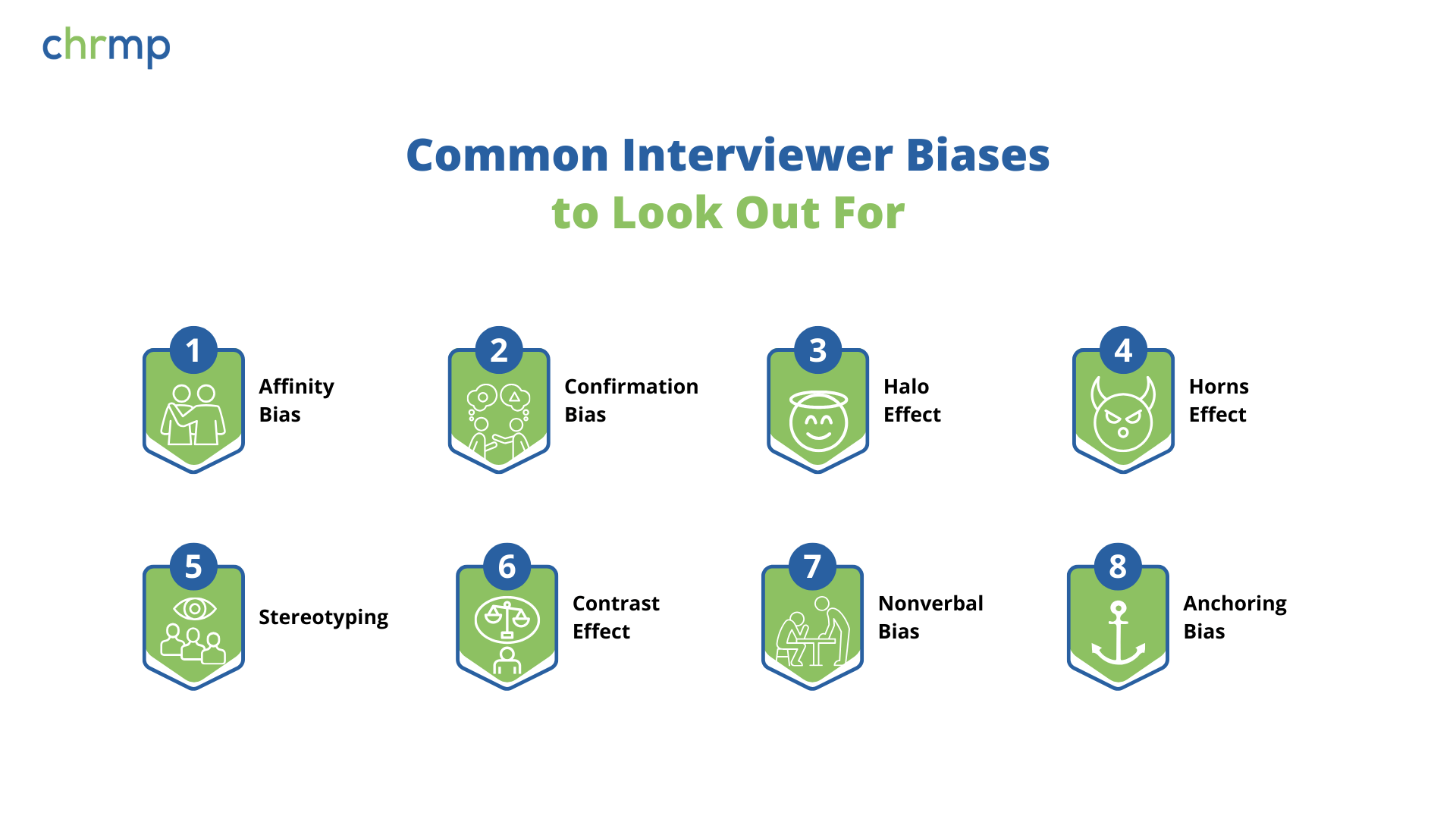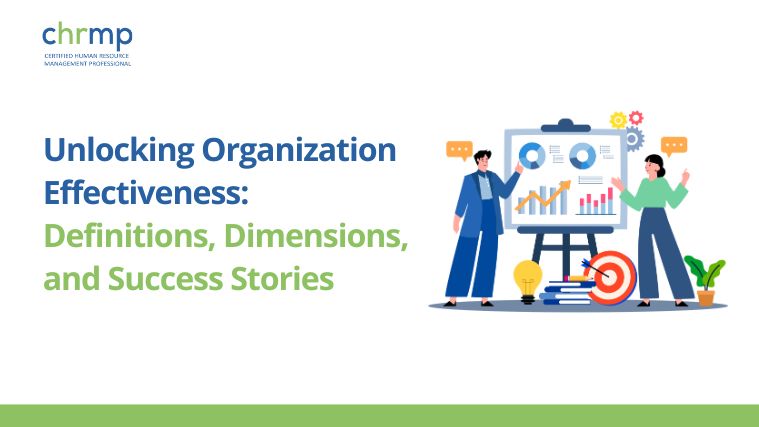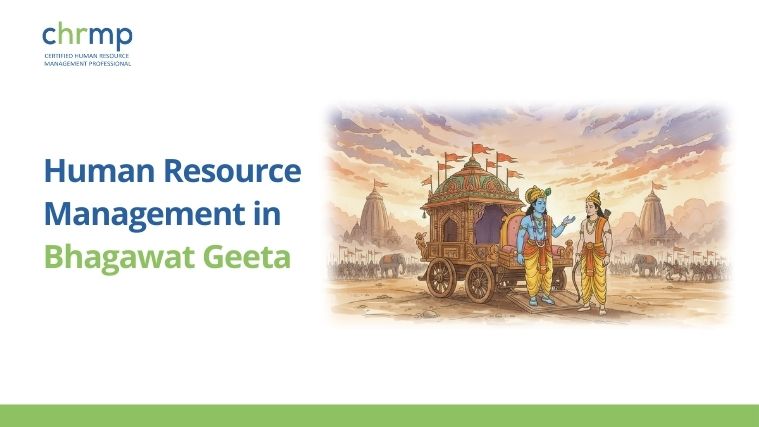What is Interviewer Bias?
Hiring the right talent is critical to an organization’s success, yet many companies make costly mistakes during the recruitment process due to interviewer bias. Understanding and addressing this issue is key to building a fair, diverse, and effective hiring strategy.
What Interviewer Bias Really Means
Interviewer bias refers to any form of subjective influence—whether conscious or unconscious—that affects the way an interviewer evaluates a candidate. This could manifest as favoring certain candidates because of shared experiences or unfairly judging others based on stereotypes or assumptions. These biases often skew hiring decisions, leading to poor outcomes that can hurt both the organization and potential hires.
How Bias During Interviews Impacts Hiring Decisions
Bias can occur in many subtle ways, even without the interviewer realizing it. Unconscious bias, also known as implicit bias, involves ingrained preferences and prejudices that affect decisions on an instinctive level. For example, an interviewer may feel more positively about a candidate who shares similar hobbies or background, leading to a more favorable evaluation despite the candidate’s actual qualifications.
An example of interviewer bias commonly seen in recruitment is affinity bias, where interviewers favor candidates who remind them of themselves or their peers. This often leads to hiring based on comfort rather than competence, which can result in a less diverse workforce.
Bias in Interviews Research: The Extent of the Problem
Research highlights just how widespread bias in job interviews can be. A study by Harvard Business Review found that common interview biases, such as confirmation bias (seeking out information that supports pre-existing beliefs) and stereotyping, are major factors in poor hiring decisions. These biases lead to missed opportunities and contribute to a lack of diversity within organizations.
Moreover, research by the Journal of Applied Psychology suggests that even structured interviews, which are meant to reduce types of interview bias, can still be affected by interviewers’ unconscious judgments. The long-term consequences of unchecked bias include increased turnover, lower employee engagement, and a less innovative workforce.
Failing to avoid bias in interviews leads to poor hiring decisions, affecting company culture, performance, and financial outcomes. Recognizing the types of bias in interviews is the first step in creating a more equitable hiring process. Companies that address these biases foster an inclusive workplace, improve employee satisfaction, and benefit from diverse perspectives that drive innovation.
By acknowledging the presence of bias during interviews and taking steps to counteract it, HR professionals can ensure that hiring decisions are based on merit rather than subconscious preferences.
Why It is Crucial to Keep Interviewer Bias in Check
In today’s competitive business landscape, attracting and retaining top talent is more critical than ever. However, interviewer bias can significantly undermine these efforts, leading to poor hiring decisions, increased costs, and a negative candidate experience. For HR professionals, recognizing and actively addressing bias during interviews is essential to ensure that the recruitment process is fair, effective, and aligned with long-term organizational goals.
1. Missed Opportunities for Top Talent
When bias in job interviews goes unchecked, it often leads to hiring the wrong candidates while overlooking exceptional talent. For example, affinity bias—the tendency to prefer candidates who are similar to the interviewer—may result in hiring someone because they “fit in” rather than because they are the best person for the job. Similarly, stereotyping or confirmation bias can cause interviewers to dismiss highly qualified candidates based on preconceived notions.
These missed opportunities can have long-term consequences. By consistently favoring a certain type of candidate, companies risk losing out on diverse perspectives, innovative ideas, and fresh approaches. The lack of diversity stemming from types of bias in interviews has been shown to stifle creativity and problem-solving abilities, which are essential for business growth and innovation.
Additionally, hiring the wrong candidate due to interviewer bias can lead to mismatches in skills and company culture. This, in turn, can cause poor job performance, decreased employee engagement, and early attrition. High turnover not only disrupts workflow but also damages team morale and cohesion.
2. The Financial Costs of Poor Hiring Decisions
Making a bad hire can be extremely costly for any organization. According to the U.S. Department of Labor, the cost of a bad hire can equal 30% of the individual’s first-year earnings. This cost includes not only the salary of the employee but also the resources spent on recruitment, training, and lost productivity.
In addition to these direct costs, there are hidden financial impacts when interview bias types influence hiring decisions. For example, a company that continuously hires candidates who align with the interviewer’s personal preferences rather than the company’s needs will likely face high turnover rates. Replacing an employee costs an estimated 50% to 60% of their annual salary, depending on the role and industry. This includes expenses related to advertising the job, conducting new interviews, and onboarding.
Furthermore, a poor hire can create disruptions within the team, leading to decreased productivity as other employees pick up the slack. If the new hire lacks the necessary skills or cultural fit, it can also create friction, which negatively affects team performance and results in delayed projects and missed business opportunities. The cumulative impact of common interview biases can therefore have a significant financial toll on the organization, making it essential to avoid bias in interviews to minimize these risks.
3. The Ripple Effect on Company Culture and Diversity
Beyond immediate financial costs, interviewer bias can have a long-lasting effect on company culture. When hiring decisions are skewed by bias, the result is often a homogenized workforce that lacks the diversity of thought, experience, and background needed for long-term innovation. Biases such as affinity bias and stereotyping can lead to teams that are filled with similar personalities, which may stifle creativity and reduce the variety of ideas within the company.
Diverse teams have been proven to outperform homogeneous ones, especially when it comes to problem-solving and creativity. According to McKinsey & Company’s research, companies in the top quartile for racial and ethnic diversity are 36% more likely to achieve above-average profitability than those in the bottom quartile. By failing to address types of bias in interviews, companies miss out on the competitive advantages that diversity brings.
Moreover, a lack of diversity at the leadership level can perpetuate the cycle of bias, as decision-makers tend to hire individuals who reflect their own backgrounds and experiences. This reinforces a biased culture where merit and innovation are sidelined, leading to stagnation.
4. Damaged Candidate Experience and Employer Brand
In today’s age of transparency, the candidate experience matters more than ever. When candidates are subjected to bias during interviews, they often leave with a negative impression of the company, which can have a lasting impact on its reputation. A poor candidate experience not only deters top talent from considering future opportunities with the organization but also affects the company’s employer brand.
In fact, candidates who feel that they were judged unfairly based on factors like gender, race, or background are likely to share their experiences on platforms such as Glassdoor, LinkedIn, or social media. Negative reviews can damage the company’s reputation as an inclusive employer and make it harder to attract diverse talent in the future. Furthermore, research shows that 72% of candidates who had a bad experience during the hiring process shared their experience with others, which can hurt the company’s recruitment efforts long-term.
For HR professionals, ensuring a fair and unbiased interview process is key to building a positive candidate experience. By reducing bias in job interviews, companies can foster a reputation for inclusivity and fairness, making them more attractive to high-caliber candidates.
5. Legal Risks and Compliance Issues
Another crucial reason to keep interviewer bias in check is the potential for legal ramifications. Biases, whether conscious or unconscious, can lead to discriminatory hiring practices, which can violate equal employment opportunity (EEO) laws. If a candidate feels they were unfairly judged based on protected characteristics like race, gender, or disability, they may file a lawsuit against the company. This not only results in costly legal battles but also damages the company’s public image.
Many organizations now implement diversity and inclusion policies to avoid discrimination and promote a fair hiring process. However, if interview bias types are not addressed, these policies become ineffective, and the organization may still face legal risks. Therefore, understanding and actively working to avoid bias in interviews is not only an ethical responsibility but also a legal necessity for HR professionals.
6. The Importance of Training and Tools to Mitigate Bias
Recognizing the existence of interviewer bias is the first step, but addressing it requires concrete action. HR professionals should prioritize interviewer training that focuses on identifying and reducing common interview biases. Regular bias-awareness training helps interviewers recognize their own unconscious biases and learn strategies to mitigate them during the hiring process.
Additionally, using structured interviews, where all candidates are asked the same questions, can significantly reduce bias during interviews. This ensures that all candidates are evaluated on the same criteria, making the process more objective and consistent. Incorporating blind recruitment practices—where details like names, gender, or educational background are removed from resumes—can also help minimize bias at the early stages of hiring.
Leveraging technology, such as AI-driven hiring platforms, can further aid in reducing bias. These platforms can analyze candidate responses based on pre-determined job criteria rather than subjective feelings, ensuring a more objective evaluation.
By addressing interviewer bias, HR professionals can safeguard their company from costly hiring mistakes, promote a diverse and inclusive workforce, and ensure a fair candidate experience. From reducing turnover to boosting innovation, the benefits of keeping bias in job interviews in check are clear, making it an essential focus for any successful HR strategy.
Common Interviewer Biases to Look Out For
Interviewer bias often goes unnoticed in the recruitment process, but it can significantly distort hiring decisions. Recognizing and mitigating these biases is crucial to ensure fairness and objectivity in interviews. Below, we explore 8 common interview biases, providing detailed definitions and relevant examples for each.
1. Affinity Bias
- Definition: Affinity bias occurs when interviewers favor candidates who remind them of themselves or share similar characteristics, backgrounds, or interests. This bias stems from the human tendency to feel more comfortable around people who are familiar or relatable, leading to an unfair advantage for candidates who appear to “fit in.”
- Example: An interviewer might prefer a candidate because they attended the same university, grew up in a similar neighborhood, or share a hobby like playing tennis. Even if another candidate is more qualified, the one with the shared background gets the nod due to affinity bias. This is a classic example of interviewer bias that results in hiring based on similarity, not skill or experience.
2. Confirmation Bias
- Definition: Confirmation bias refers to the tendency to form an initial opinion about a candidate—whether positive or negative—and then selectively focus on information that supports this preconceived notion, while ignoring evidence that might contradict it. This often happens early in the interview process, even within the first few minutes of meeting a candidate.
- Example: An interviewer forms a positive impression of a candidate based on their polished resume or confident demeanor. As a result, they focus on the candidate’s strong answers while downplaying any weaknesses or red flags. Conversely, if the interviewer initially doubts the candidate’s abilities, they may disregard impressive responses that challenge their initial judgment. This bias during interviews prevents an objective evaluation.
3. Halo Effect
- Definition: The halo effect occurs when one particularly positive characteristic of a candidate—such as their appearance, charisma, or a prestigious qualification—overshadows other potentially negative aspects of their profile. This creates a biased view, making the interviewer overly optimistic about the candidate’s overall suitability.
- Example: A candidate who attended an Ivy League university might be perceived as more capable overall, even if their work experience or interview responses don’t fully align with the job requirements. The interviewer may gloss over any shortcomings due to the halo effect, assuming that the candidate’s educational background makes them a better fit than others.
4. Horns Effect
- Definition: The horns effect is the opposite of the halo effect, where one negative attribute of the candidate disproportionately influences the interviewer’s perception of their overall performance. A single mistake or undesirable trait can cloud the interviewer’s judgment, leading them to unfairly dismiss the candidate.
- Example: If a candidate struggles to answer one technical question during the interview, the interviewer might label them as unqualified, even if they excelled in other areas. This type of interview bias can prevent skilled candidates from being fairly considered because the interviewer is overly focused on one flaw.
5. Stereotyping
- Definition: Stereotyping involves making assumptions about a candidate’s abilities or behavior based on their gender, race, age, ethnicity, or other demographic factors, rather than considering the individual’s actual qualifications or experience. Stereotypes are often deeply ingrained and can lead to discriminatory practices during the hiring process.
- Example: An interviewer might assume that a young candidate lacks maturity or leadership skills, or that an older candidate isn’t tech-savvy. This bias in job interviews unfairly penalizes candidates based on generalized beliefs rather than their true potential, leading to exclusion from consideration even when they are well-qualified.
6. Contrast Effect
- Definition: The contrast effect occurs when the evaluation of a candidate is influenced by the performance of others interviewed before or after them, rather than the candidate’s own merit. This bias happens when interviewers compare candidates to one another instead of measuring them against the job’s requirements, which can skew the overall perception of a candidate’s abilities.
- Example: If an interviewer speaks with a particularly strong candidate before interviewing an average one, the second candidate may seem weaker by comparison, even if they meet the job criteria. Conversely, a mediocre candidate might appear exceptional if they follow a weak interviewee. This bias during interviews affects consistency in decision-making, as candidates are judged relative to each other rather than the role.
7. Nonverbal Bias
- Definition: Nonverbal bias involves placing too much importance on a candidate’s body language, tone of voice, physical appearance, or other nonverbal cues, rather than focusing on the candidate’s responses and qualifications. This bias is particularly problematic when interviewers misinterpret nervousness, physical expressions, or communication styles as indicators of competency or lack thereof.
- Example: A candidate who is soft-spoken or seems nervous might be perceived as lacking confidence, even if they provide excellent answers to the questions. Meanwhile, a more outwardly confident candidate, who may not be as skilled, could be rated higher simply because they project an air of assurance. This type of interview bias overlooks the substance of what the candidate is actually saying.
8. Anchoring Bias
- Definition: Anchoring bias occurs when an interviewer fixates on one piece of information—often something they learn early in the interview—and lets it disproportionately influence the rest of their decision-making. The interviewer becomes “anchored” to this initial impression, whether it’s positive or negative, and fails to objectively evaluate other factors.
- Example: If an interviewer hears that a candidate previously earned a lower salary or held a junior position, they might assume the candidate is less qualified for the current role, even if the candidate has the skills and experience required. This form of interviewer bias can lead to unfairly dismissing candidates or undervaluing their potential based on irrelevant details.
By understanding these types of bias in interviews, HR professionals can better navigate the hiring process and work to avoid bias in interviews. Identifying and addressing these common interview biases ensures a more objective, fair, and effective recruitment strategy, ultimately leading to better hires and a more inclusive workplace.
How to Avoid Bias in Interviews
Minimizing interviewer bias is essential to making fair and informed hiring decisions. Bias in job interviews not only leads to poor hiring outcomes but also limits diversity and can harm the company’s reputation. HR professionals must be proactive in addressing the types of interview bias to create a more equitable recruitment process. Below are effective strategies to help avoid bias in interviews and improve hiring practices.
1. Structured Interviews
One of the most effective ways to reduce bias in job interviews is by conducting structured interviews. This method involves preparing a standardized set of questions that are asked to every candidate in the same order. By ensuring that all candidates are evaluated on the same criteria, you reduce the likelihood of subjective judgments influencing the outcome.
- Why it works: Structured interviews force interviewers to focus on relevant, job-related qualifications rather than personal preferences or impressions. This helps minimize interviewer bias types such as the halo effect or affinity bias, where interviewers may unconsciously favor candidates based on irrelevant traits like personality or appearance.
2. Diverse Interview Panels
Including a mix of interviewers from different backgrounds, departments, and experiences helps introduce varied perspectives during the interview process. A diverse panel can better identify and counteract types of bias in interviews, leading to more balanced and objective evaluations.
- Why it works: Each interviewer brings a unique viewpoint, reducing the influence of individual biases. For example, while one interviewer might unconsciously fall into confirmation bias, another can offer a different perspective. Having multiple evaluators also encourages a discussion that can challenge any biased opinions.
3. Bias Awareness and Training
Regular training on interviewer bias is critical to helping interviewers recognize and manage their own biases. By understanding the various common interview biases—such as stereotyping, affinity bias, or the contrast effect—interviewers can learn how to mitigate these influences during interviews.
- Why it works: Bias training increases awareness and equips interviewers with strategies to pause and reflect before making decisions. It also encourages interviewers to challenge their assumptions and focus on objective criteria rather than letting unconscious biases dictate their judgment. Continuous training ensures that reducing bias during interviews remains a priority in the hiring process.
4. Using Objective Evaluation Criteria
Creating a structured evaluation system that assesses candidates based on clearly defined job-related criteria can significantly reduce bias in job interviews. Instead of relying on “gut feelings” or personal impressions, interviewers should use a scoring system to objectively evaluate each candidate’s skills, experience, and potential.
- Why it works: By focusing on measurable qualifications, interviewers avoid being swayed by factors such as appearance, background, or nonverbal cues. This strategy ensures that decisions are based on facts rather than feelings, preventing biases like the halo effect or nonverbal bias from affecting the final outcome.
5. Blind Recruitment Practices
Blind recruitment involves removing identifiable details (such as names, gender, age, or educational background) from resumes and applications to ensure that candidates are judged solely on their skills and experience. This helps to eliminate biases that may arise from demographic factors or personal information.
- Why it works: Blind recruitment removes common sources of bias, such as stereotyping based on gender, ethnicity, or age. By anonymizing the early stages of the hiring process, interviewers focus purely on the candidate’s qualifications, reducing the risk of interview bias types like anchoring or stereotyping.
6. Using Pre-Employment Assessments
Incorporating standardized assessments—such as skills tests, cognitive ability tests, or behavioral assessments—can help provide objective data on a candidate’s capabilities. These assessments offer a consistent way to compare candidates and reduce reliance on subjective impressions formed during interviews.
- Why it works: Pre-employment assessments give interviewers tangible, unbiased information about each candidate’s skills and potential. This data-driven approach helps balance personal preferences, reducing bias during interviews and ensuring that the decision is based on objective criteria rather than gut feelings.
7. Standardized Scoring and Feedback Systems
After each interview, having interviewers use a standardized scoring rubric to evaluate candidates based on pre-established criteria can help eliminate bias. Similarly, collecting feedback in a structured, written format prevents interviewers from being swayed by other people’s opinions or by their own shifting impressions of a candidate.
- Why it works: Standardized scoring provides a clear and consistent way to compare candidates across the same criteria, reducing the influence of unconscious biases. Written feedback also encourages interviewers to reflect on their assessment and provides a record that can be reviewed for fairness.
8. Post-Interview Debriefs
Regular debriefs after interviews can help highlight and discuss any potential biases that may have influenced evaluations. By having multiple team members review each candidate and discussing the reasoning behind their ratings, the group can spot instances of interviewer bias and challenge them collectively.
- Why it works: Post-interview debriefs foster transparency and accountability. When team members must explain their evaluations, it encourages them to think critically and reconsider any biases. This collaborative approach helps avoid bias in interviews by creating a shared understanding of what constitutes a fair and objective assessment.
By implementing structured interviews, diverse panels, bias training, and objective criteria, HR professionals can significantly reduce bias in job interviews. Incorporating practices such as blind recruitment, pre-employment assessments, and standardized feedback systems ensures a more fair and inclusive hiring process. Reducing types of interview bias leads to better hiring decisions, fosters diversity, and enhances the overall quality of the recruitment process.
Conclusion
Interviewer bias is a critical issue that can significantly undermine the effectiveness of your recruitment process. As we’ve discussed, bias can lead to missed opportunities, poor hiring decisions, and even legal and financial repercussions. Recognizing and addressing bias during interviews is essential for HR professionals who aim to create a fair, inclusive, and high-performing workplace.
Understanding common interview biases such as affinity bias, confirmation bias, and stereotyping is the first step in reducing their impact. From subtle biases like the halo effect to more overt tendencies such as nonverbal bias, these unconscious influences can distort the evaluation of candidates and damage the integrity of the hiring process. Whether it’s through structured interviews, diverse panels, or regular bias-awareness training, there are practical and effective ways to avoid bias in interviews.
Implementing strategies like blind recruitment practices, standardized scoring rubrics, and pre-employment assessments helps ensure that hiring decisions are based on objective criteria rather than subjective feelings. By fostering a collaborative approach with post-interview debriefs and continuous feedback, HR teams can further reduce types of interview bias and ensure more consistent and fair hiring outcomes.
By actively working to minimize bias in job interviews, HR professionals can help their organizations attract top talent, build a diverse workforce, and improve employee retention. Reducing types of bias in interviews not only enhances the candidate experience but also strengthens the overall recruitment process, leading to better long-term business success.
In today’s competitive environment, the ability to avoid bias in interviews is not just a best practice—it’s a critical component of effective and ethical HR management. Addressing interviewer bias is key to creating a more inclusive, innovative, and high-performing team that will drive the organization forward.
